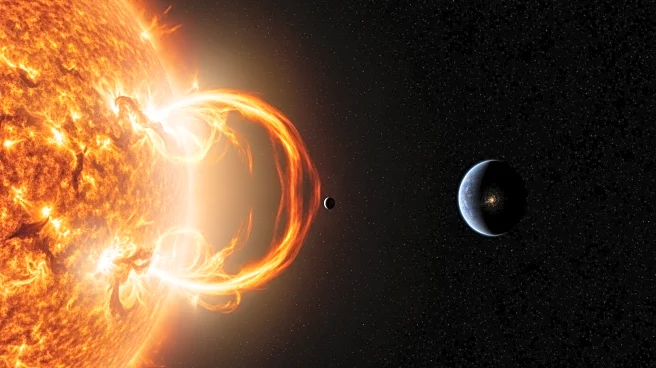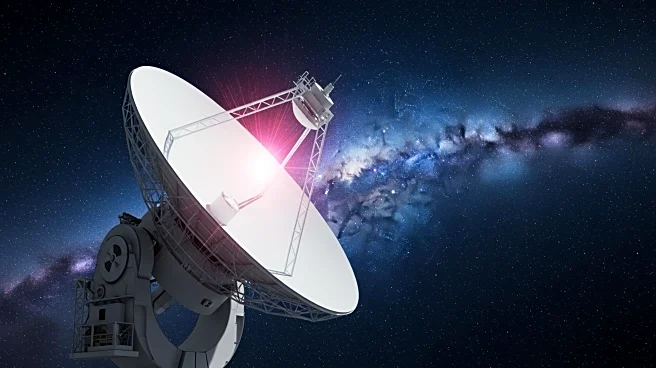What's Happening?
Astronomers have observed the first confirmed coronal mass ejection (CME) from a star outside our solar system, using the European Space Agency's XMM-Newton and the LOFAR radio telescope. The CME was detected
from a red dwarf star approximately 130 light-years away, with the ejected material traveling at a speed capable of stripping away the atmosphere of any nearby planets. This discovery marks a significant milestone in understanding stellar behavior and its impact on the habitability of exoplanets, as such powerful eruptions could render planets uninhabitable despite being in the habitable zone.
Why It's Important?
The observation of a CME from a distant star has profound implications for the search for life beyond Earth. Red dwarf stars, which are abundant in the Milky Way, often host planets within their habitable zones. However, frequent and intense CMEs could strip these planets of their atmospheres, challenging existing models of habitability. This discovery prompts a reevaluation of criteria for habitable planets and suggests that space weather around smaller stars may be more extreme than previously thought. Understanding these dynamics is crucial for refining the search for life and assessing the potential for habitable conditions on exoplanets.
What's Next?
Future research will focus on observing more CMEs from other stars to better understand their frequency and impact on surrounding planets. This will involve continued use of advanced telescopes like XMM-Newton and LOFAR, as well as the development of new observational techniques. The findings will inform the search for life by helping astronomers identify which exoplanets are most likely to retain their atmospheres and support life. Additionally, this research will enhance our understanding of space weather phenomena, contributing to broader astrophysical knowledge.
Beyond the Headlines
The discovery highlights the importance of international collaboration in space research, as the combined efforts of multiple observatories and research institutions were crucial in achieving this breakthrough. It also underscores the need for continued investment in space exploration technologies to uncover the mysteries of the universe and assess the potential for life on other planets.











